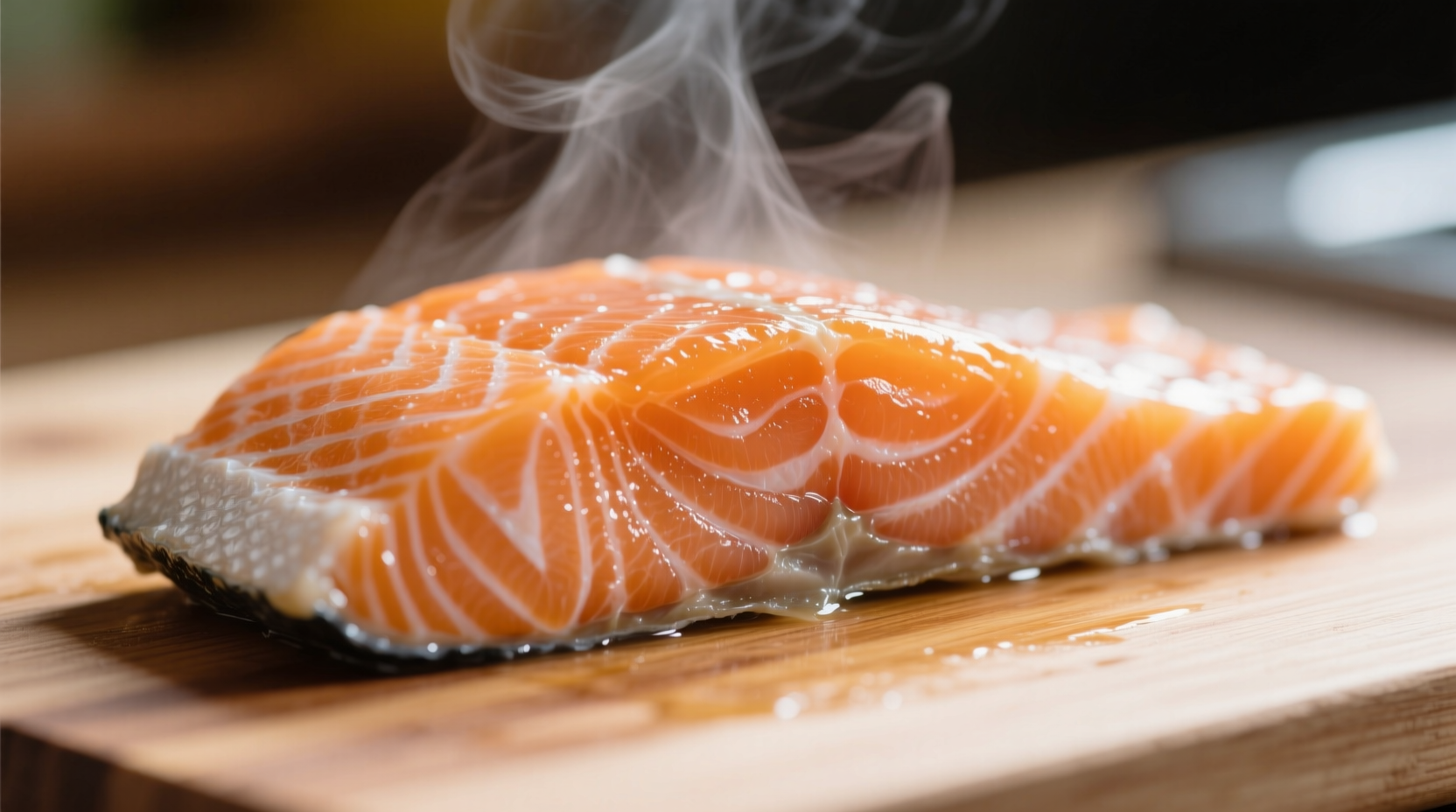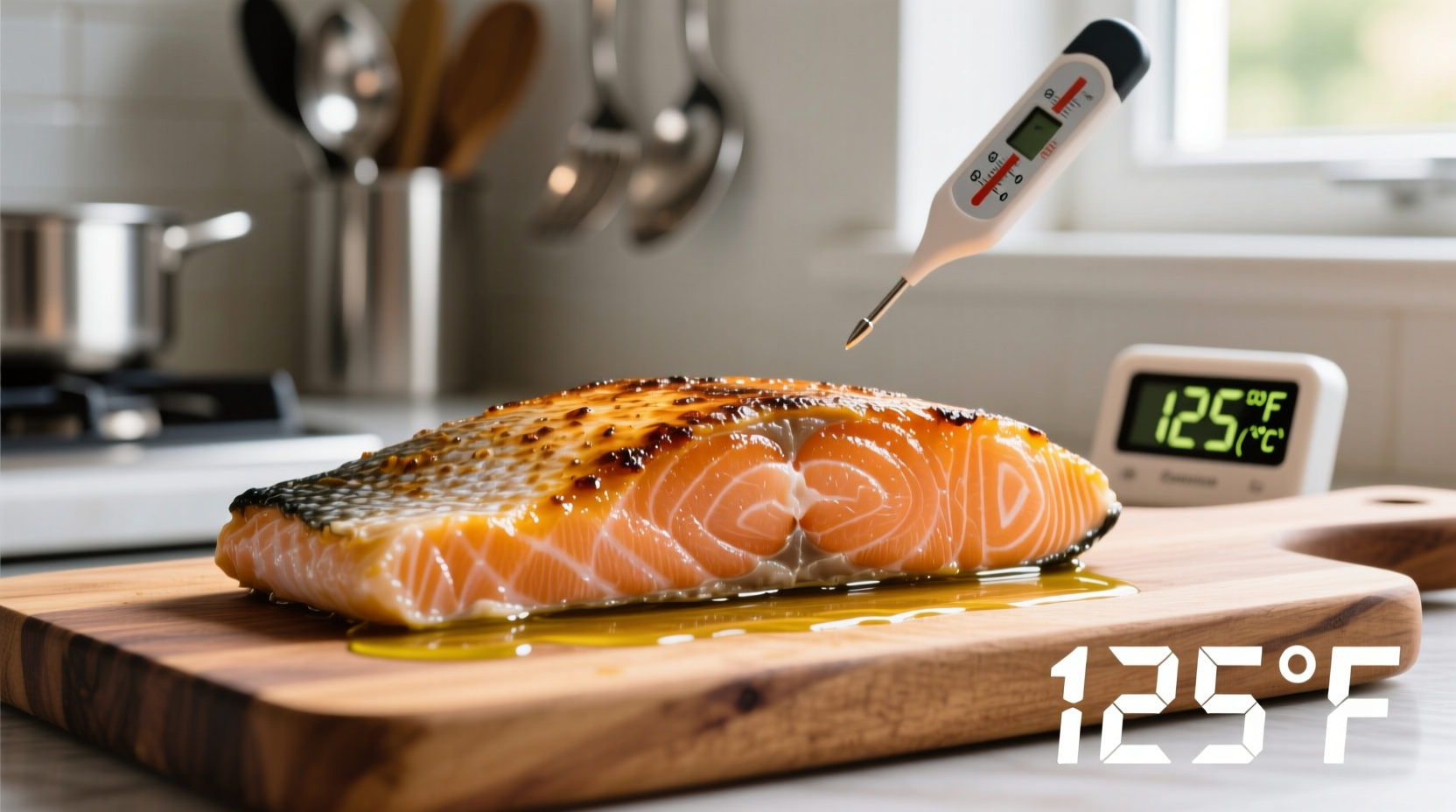Discover the precise temperatures that transform ordinary salmon into a restaurant-quality dish at home. Whether you're baking, pan-searing, or grilling, understanding the science behind salmon's ideal temperature range prevents dry, overcooked fish and ensures food safety without sacrificing flavor. This guide reveals professional techniques backed by culinary science and food safety standards.
Why Temperature Matters More Than Timing for Perfect Salmon
Unlike most proteins, salmon's delicate fat structure requires precise temperature control rather than fixed cooking times. The sweet spot between 125-135°F creates that coveted translucent center with flaky yet moist texture. Cooking beyond 140°F causes proteins to contract excessively, squeezing out precious oils that keep salmon succulent.
| Doneness Level | Internal Temperature | Texture Characteristics | Recommended For |
|---|---|---|---|
| Medium-Rare | 120-125°F (49-52°C) | Translucent center, buttery texture | Cedar-plank, sous vide |
| Medium (Ideal) | 125-135°F (52-57°C) | Mostly opaque with slight translucency | All cooking methods |
| Medium-Well | 135-140°F (57-60°C) | Fully opaque, beginning to firm | Food safety cautious cooks |
| Overcooked | 145°F+ (63°C+) | Dry, chalky, loss of oils | Avoid at all costs |
The Evolution of Salmon Cooking Standards
Salmon temperature recommendations have evolved significantly as food safety understanding improved. In the 1990s, many chefs served salmon at 110-115°F, risking parasitic infection. The FDA's 2009 Food Code established 145°F as the safe minimum, but modern culinary science shows lower temperatures are safe with proper handling. Today's best practices balance food safety with texture preservation through precise temperature control and quality sourcing.
Temperature Guide by Cooking Method
Oven-Baked Salmon Temperature Control
Preheat to 375°F (190°C) for optimal results. Place salmon skin-side down on a parchment-lined pan. Insert thermometer into thickest part. Remove at 120°F for medium-rare (will reach 125°F resting) or 130°F for medium (will reach 135°F). Pro tip: Tent with foil during resting to maintain even temperature without overcooking edges.
Pan-Seared Salmon Precision
Heat oil until shimmering but not smoking (about 350°F/175°C). Sear skin-side down for 90% of cooking time. Flip only when salmon releases easily from pan. Check temperature in center after 4-6 minutes. The ideal window for medium doneness is removing at 130°F (will reach 135°F while finishing in pan).
Grilling Temperature Management
Maintain medium heat (350-400°F/175-205°C). Oil grill grates thoroughly. Place salmon skin-side up initially. When fish releases naturally (about 80% cooked), flip to finish. Remove at 128°F for medium-rare (will reach 133°F resting). For cedar-plank cooking, target 125°F internal temperature.
Food Safety Boundaries You Must Respect
While culinary professionals often cook salmon below 145°F, certain situations require stricter temperature adherence:
- Immunocompromised individuals: Cook to minimum 145°F
- Previously frozen salmon: Requires full 145°F for safety
- Commercial food service: Must follow FDA Food Code's 145°F standard
- Uncertain salmon source: When origin is unknown, use 145°F
The USDA's Food Safety and Inspection Service confirms that proper flash-freezing kills parasites, making lower-temperature cooking safe for commercially sourced salmon (USDA FSIS guidelines).
Visual Doneness Indicators Beyond the Thermometer
When a thermometer isn't available, use these professional visual cues:
- Flakiness test: Gently press center with fork - should separate into clean flakes while maintaining shape
- Color change: Deep orange-red transforms to opaque pinkish-beige throughout
- Texture: Should feel springy, not mushy or rigid when pressed
- Oils: Clear liquid beads form on surface when properly cooked

Troubleshooting Common Temperature Mistakes
Dry, Overcooked Salmon Fix
If salmon reaches 145°F+, immediately transfer to a warm plate and cover with lemon-dill sauce. The residual heat will continue cooking, so serve within 2 minutes. For future attempts, reduce cooking time by 30-45 seconds and check temperature earlier.
Undercooked Salmon Recovery
For salmon below 120°F, return to gentle heat (275°F oven or lowest stovetop setting) for 60-90 seconds. Check temperature every 15 seconds. Never microwave undercooked salmon as it destroys texture.
Professional Temperature Tips You Won't Find Elsewhere
Season salmon with salt 15 minutes before cooking to draw out excess moisture. This creates a drier surface for better searing while maintaining internal moisture. For oven cooking, place a baking sheet on the rack below to catch drips and maintain consistent oven temperature. Always use an instant-read thermometer - dial thermometers lack the precision needed for delicate fish.











 浙公网安备
33010002000092号
浙公网安备
33010002000092号 浙B2-20120091-4
浙B2-20120091-4